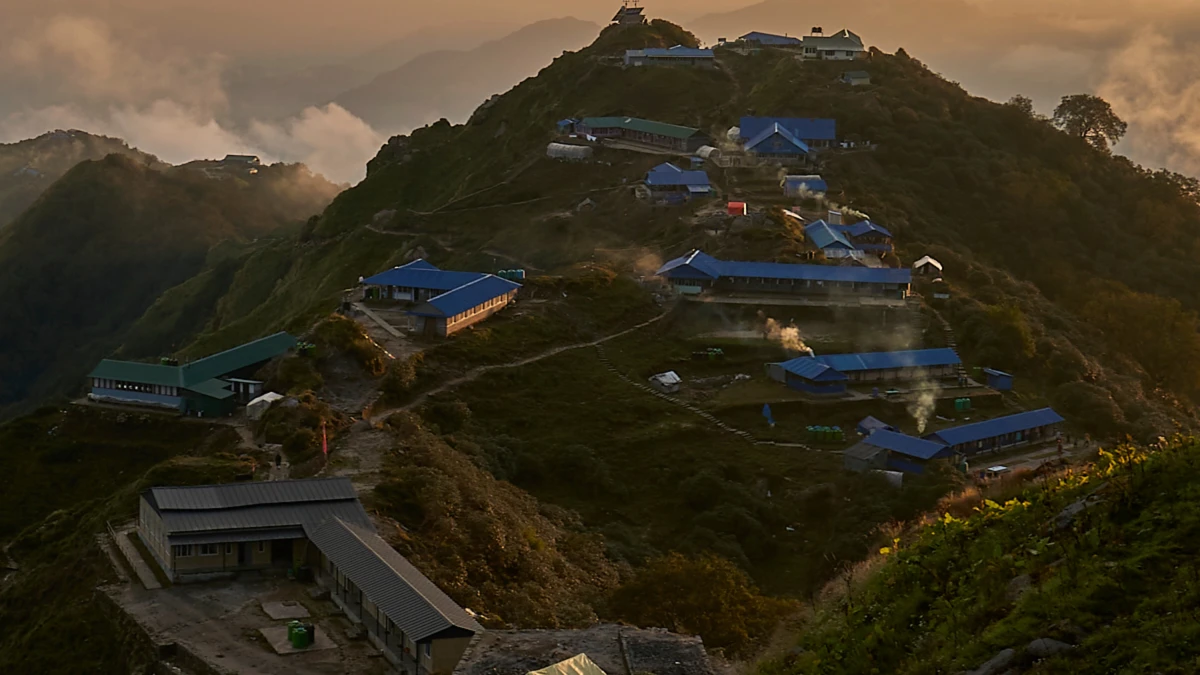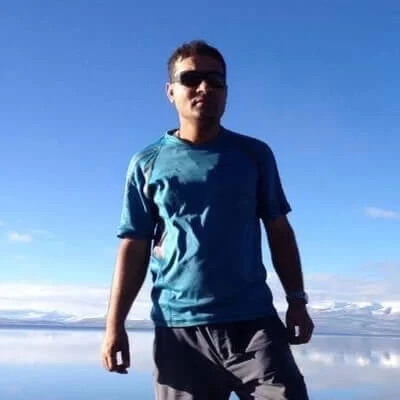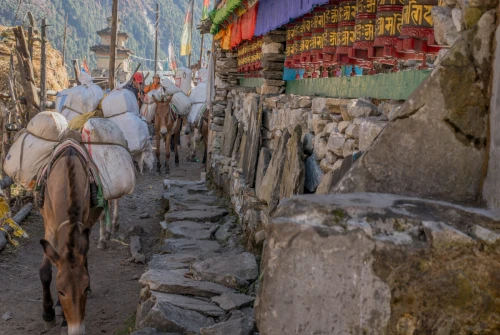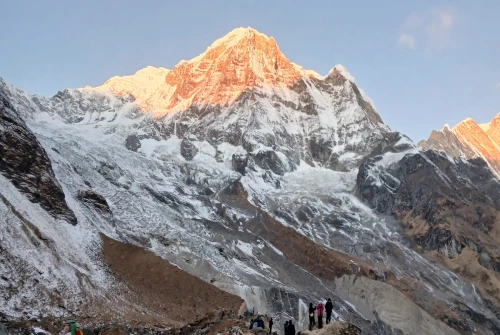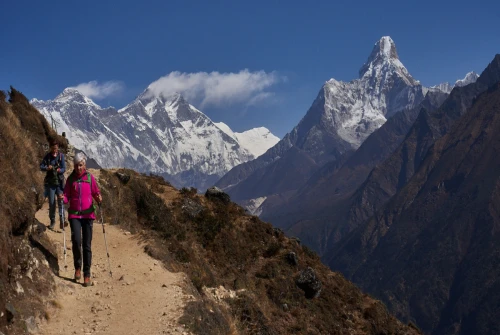Introduction
Nepal, a land of towering peaks, deep valleys, and vibrant cultures, is home to the majestic Himalayas and the world’s highest peak, Mount Everest (8,848 meters). Nestled in the heart of the Himalayas, Nepal offers an extraordinary blend of breathtaking natural landscapes and rich cultural heritage that continues to captivate trekkers, mountaineers, adventure seekers, and cultural enthusiasts from around the globe. For decades, Nepal has been synonymous with Himalayan trekking and high-altitude adventure tourism, attracting visitors eager to experience its dramatic mountain scenery, diverse ecosystems, and warm hospitality.
The journey of trekking in Nepal began in the 1950s, during an era when only a few intrepid mountaineers and explorers dared to venture into the rugged and uncharted mountain trails. Early expeditions were grueling, with limited infrastructure, scarce facilities, and challenging logistics. Trekking was often synonymous with mountaineering, involving long, physically demanding routes that tested the endurance and spirit of adventurers. These pioneering journeys, including the historic 1953 Mount Everest expedition led by Sir Edmund Hillary and Tenzing Norgay, put Nepal on the global map as a premier destination for high-altitude exploration.
Since those early days, the trekking industry in Nepal has undergone a profound transformation. Today, Nepal boasts a well-established network of trekking routes that cater to a wide range of travelers from casual hikers and cultural tourists to serious mountaineers. Infrastructure has dramatically improved, with hundreds of teahouses, lodges, and rest stops providing comfort and accessibility along popular trails such as the Annapurna Circuit, Everest Base Camp, Langtang Valley, and more recently, lesser-known routes like the Mardi Himal and Upper Mustang treks.
Alongside infrastructure growth, there has been a heightened emphasis on safety and sustainability. Modern trekking expeditions in Nepal are supported by advanced safety protocols, GPS navigation, and emergency response systems. Moreover, growing environmental awareness has led to the adoption of sustainable tourism practices, aimed at reducing trekking’s ecological footprint. Initiatives such as waste management programs, banning single-use plastics, and promoting community-based tourism are helping to protect Nepal’s fragile mountain ecosystems and empower indigenous communities.
Cultural exchange has also become an integral part of the trekking experience in Nepal. Trekkers have the unique opportunity to engage with local ethnic groups such as the Sherpas, Tamangs, Gurungs, and Thakalis, experiencing their vibrant traditions, festivals, and cuisine. These interactions enrich the journey and foster a deeper appreciation for Nepal’s diverse cultural fabric.
This blog explores the rich history and dynamic evolution of trekking in Nepal, highlighting key milestones, infrastructure developments, cultural impacts, environmental initiatives, and future prospects. Whether you’re an adventure traveler planning your next Himalayan expedition or a curious reader fascinated by Nepal’s trekking legacy, this comprehensive guide will illuminate how trekking has evolved from its humble beginnings into a globally renowned adventure tourism industry, and what lies ahead in this ever-changing landscape.
Early Days: Pioneering Treks and Mountaineering (1950s–1970s)
The origins of trekking in Nepal can be traced back to the mid-20th century, a pivotal period when Nepal first opened its borders to foreign visitors. Before this, Nepal remained largely isolated from the outside world, preserving its remote mountain landscapes and unique cultures but limiting access for adventurers and explorers.
The historic 1953 Mount Everest expedition by Sir Edmund Hillary and Tenzing Norgay marked a turning point not only for mountaineering but also for Nepal’s future as a trekking destination. This remarkable achievement captured global attention and sparked widespread fascination with Nepal’s Himalayan peaks. For the first time, the world’s eyes turned toward Nepal as a land of towering summits and challenging trails.
Following this breakthrough, early trekking routes such as the Annapurna Circuit, Everest Base Camp Trek, and Langtang Valley Trek began to attract adventurous mountaineers and explorers. These routes were rugged and demanding, often requiring trekkers to be self-sufficient and prepared for harsh conditions. The infrastructure was minimal there were few established trails, no teahouses or lodges, and porters were essential for carrying supplies through difficult terrain.
Trekking during this era was as much about survival and endurance as it was about exploration. Trekkers needed to navigate unmarked paths, cross unstable suspension bridges, and endure extreme weather. Despite these challenges, these pioneering treks laid the foundation for what would become one of the world’s most popular trekking destinations.
The early trekking experiences also fostered deep connections between foreign adventurers and the local Nepalese people, particularly the Sherpas, who provided indispensable support as guides and porters. Their knowledge of the mountains and culture was crucial for the success and safety of early expeditions.
The 1950s to 1970s era is thus remembered as the golden age of exploration in Nepal’s trekking history, an age defined by discovery, resilience, and the initial steps toward a vibrant trekking industry.
Infrastructure Development and Commercial Growth (1980s–2000s)
The 1980s marked a turning point in the history of trekking in Nepal, as the industry began its shift from a niche adventure activity to a commercialized and more accessible experience. This period witnessed significant infrastructure development that revolutionized how trekkers explored the Himalayas, transforming what was once a rugged and often uncomfortable journey into a more organized and comfortable adventure.
One of the most notable developments was the establishment of teahouses and lodges along popular trekking routes. These simple yet cozy accommodations provided trekkers with warm meals, a place to rest, and shelter from the elements, eliminating the need for bulky camping gear and enabling longer, more comfortable treks. The teahouse trekking model quickly became synonymous with Nepal’s trekking culture, encouraging more tourists to explore trails like the Annapurna Circuit, Everest Base Camp, and Langtang Valley.
Alongside improved accommodations, the Nepalese government implemented important measures to regulate trekking activities and ensure the safety of visitors. The introduction of mandatory trekking permits, including the Trekkers’ Information Management System (TIMS) card and national park entry permits, helped monitor and manage tourist flows while protecting the fragile mountain environment. These permits also played a crucial role in generating revenue to support conservation efforts and infrastructure maintenance.
The rise of professional trekking agencies further shaped the industry during this era. These companies offered guided tours, porter services, and comprehensive package deals that catered to various levels of trekking experience, from casual hikers to serious mountaineers. With their expertise and logistical support, trekking agencies made the Himalayas more accessible to international travelers, facilitating safer and more enjoyable expeditions.
This period also saw the emergence of Nepal’s most iconic trekking routes as internationally recognized adventure destinations. The Annapurna Circuit, with its diverse landscapes and cultural richness, and the Everest Base Camp trek, famed for its stunning mountain vistas and Sherpa hospitality, became bucket-list treks for travelers worldwide. The Langtang Valley trek also gained popularity for its pristine nature and proximity to Kathmandu.
Together, these developments in infrastructure, regulation, and commercial services laid a strong foundation for Nepal’s booming trekking industry in the decades to come.
Rise of Sustainable and Eco-Friendly Trekking (2010s–Present)
In the last decade, growing awareness of environmental degradation and the cultural impact of mass tourism has driven Nepal’s trekking industry toward more sustainable and eco-friendly practices. As the number of trekkers increased, concerns about waste accumulation, trail erosion, and the preservation of fragile mountain ecosystems prompted action from both government authorities and trekking organizations.
One of the key players leading this shift has been the Trekking Agencies’ Association of Nepal (TAAN), alongside various government bodies and environmental NGOs. Together, they have championed responsible trekking practices aimed at minimizing the negative impacts of tourism while maximizing benefits for local communities.
Among the most important initiatives are comprehensive waste management programs that encourage trekkers, guides, and lodges to follow the “Leave No Trace” principles. These efforts emphasize carrying out all non-biodegradable waste and reducing litter along trekking routes. Many trekking lodges now actively participate in recycling and composting, and some trekking areas have introduced waste collection points and awareness campaigns.
To reduce reliance on fossil fuels and limit carbon footprints, there has been a significant adoption of solar energy in remote lodges and teahouses. Solar panels provide sustainable electricity for lighting, heating water, and charging electronic devices, reducing the need for kerosene lamps and diesel generators, which can be harmful to both health and the environment.
Another major step toward sustainability is the ban on single-use plastics in trekking regions. Plastic waste has long been a critical issue in the Himalayas, where harsh weather conditions slow decomposition. This ban is part of a broader effort to preserve the pristine natural beauty of trekking areas and protect wildlife.
In addition to environmental efforts, sustainable trekking emphasizes community-based tourism, which empowers local populations—particularly ethnic groups like the Sherpas, Tamangs, and Gurungs. By involving communities directly in tourism activities, Nepal ensures that economic benefits from trekking support local development, education, and cultural preservation. Visitors get the chance to experience authentic cultural exchanges and support indigenous livelihoods.
To reduce overcrowding on popular trails and ease environmental pressures, new and less crowded trekking routes such as the Mardi Himal Trek and the Upper Mustang Trek have been promoted. These alternative routes offer trekkers stunning landscapes and rich cultural experiences away from the well-trodden paths, contributing to a more balanced distribution of tourism.
Together, these sustainable and eco-friendly trekking practices reflect Nepal’s commitment to preserving its natural heritage while fostering responsible adventure tourism that benefits both visitors and local communities.
Modern Trekking Experience: Technology and Globalization
The trekking landscape in Nepal has been profoundly transformed by advances in technology and the forces of globalization, creating a more accessible, safer, and diverse experience for today’s adventurers. Modern trekking combines the timeless allure of the Himalayas with the convenience and innovation of the digital age.
One of the most impactful changes has been the widespread use of GPS devices and digital maps, which allow trekkers to navigate challenging routes with greater confidence and precision. These tools have reduced the risks associated with getting lost on unfamiliar trails and have enhanced overall trip planning and safety.
The rise of online booking platforms has also revolutionized how trekkers arrange permits, guides, and accommodation. Visitors can now secure trekking permits, such as the essential TIMS card, and reserve local guides or porter services from anywhere in the world. This seamless digital access has simplified logistics and opened Nepal’s trekking opportunities to a broader global audience.
Social media platforms like Instagram, Facebook, and travel blogs have played a major role in popularizing Nepal’s trekking routes and cultural experiences. Trekkers frequently share stunning photos, videos, and stories that inspire others to explore lesser-known trails and engage more deeply with Nepal’s diverse ethnic cultures. This global connectivity continues to fuel demand and encourages sustainable tourism awareness.
Safety standards have also improved significantly. Besides the mandatory TIMS cards, there are stricter regulations governing guides and porters, ensuring professional conduct and safety training. Emergency communication devices and updated weather forecasting contribute to better risk management, making trekking safer than ever before.
Moreover, Nepal’s adventure tourism industry has expanded beyond traditional trekking to include exciting activities such as mountain biking, ultra-marathons, and immersive cultural tours. These new offerings attract a wider variety of travelers and showcase Nepal’s versatility as a multi-adventure destination.
In essence, the modern trekking experience in Nepal is a harmonious blend of ancient mountain culture and cutting-edge technology, providing trekkers with unforgettable adventures that are safer, more comfortable, and culturally enriching.
Challenges Facing Nepal’s Trekking Industry
Despite its remarkable growth and global popularity, Nepal’s trekking industry faces a variety of pressing challenges that require urgent attention to ensure the sector’s long-term sustainability and resilience.
One of the most significant issues is environmental degradation. The surge in trekking traffic has led to increased waste accumulation, trail erosion, and damage to fragile mountain ecosystems. Popular trekking routes, especially Everest Base Camp and the Annapurna Circuit, suffer from littering and overuse, which threaten the pristine natural environment that draws trekkers in the first place. Effective waste management programs and stricter enforcement of environmental regulations are critical to addressing this challenge.
Another major concern is the impact of climate change in the Himalayas. Rising temperatures are causing glaciers to melt at unprecedented rates, altering landscapes and making some trekking routes more hazardous or even impassable. Unpredictable weather patterns, including sudden storms and heavy rainfall, increase the risk of landslides and avalanches, complicating trekking logistics and safety.
Overcrowding on popular trails remains a significant problem. The Everest Base Camp trek, in particular, experiences seasonal congestion that not only diminishes the trekking experience but also exacerbates environmental strain. This overcrowding has prompted authorities and trekking agencies to promote less crowded alternative routes such as the Mardi Himal and Upper Mustang treks, balancing tourism flows and protecting heavily trafficked areas.
The trekking industry has also been deeply affected by pandemics and geopolitical issues. The COVID-19 pandemic caused an unprecedented halt in tourism, resulting in economic hardships for local communities dependent on trekking revenue. Political instability and border disputes occasionally disrupt travel plans and deter potential visitors, highlighting the vulnerability of the industry to external factors.
Furthermore, significant infrastructure gaps remain, especially in remote trekking regions. Despite improvements, many trails lack adequate road access, medical facilities, and reliable communication networks. These shortcomings pose challenges for emergency response and limit the potential for expanding trekking into less-developed areas.
Addressing these challenges requires coordinated efforts from the government, local communities, trekking agencies, and international partners. Sustainable solutions focused on environmental conservation, climate adaptation, infrastructure development, and crisis management will be essential for securing the future of Nepal’s trekking industry.
The Socio-Economic Impact of Trekking
Trekking has become one of the most vital pillars of Nepal’s economy, generating millions of dollars annually through various revenue streams such as trekking permits, guide and porter services, accommodations, and related tourism activities. This influx of income has had a transformative effect on the livelihoods of many Nepalese communities, especially in remote mountainous regions where alternative economic opportunities are limited.
One of the most significant socio-economic benefits of trekking is the creation of employment opportunities. The industry provides jobs for thousands of locals including guides, porters, lodge owners, cooks, and artisans. Importantly, trekking tourism has increasingly empowered women and marginalized communities by integrating them into the workforce and supporting gender equality initiatives. Many community-based tourism projects actively promote women’s participation, contributing to greater social inclusion and economic independence.
Trekking has also played a crucial role in encouraging the preservation of cultural heritage. Through community tourism initiatives, local groups showcase traditional lifestyles, festivals, handicrafts, and cuisine to visitors. This cultural exchange not only enriches the trekking experience but also motivates communities to protect and maintain their unique identities in the face of modernization.
Additionally, the economic benefits of trekking have spurred infrastructure development in remote regions. Revenues generated help fund the construction and maintenance of trails, roads, schools, health clinics, and communication networks, significantly improving the quality of life for local residents. Better infrastructure, in turn, enhances the safety and convenience of trekking routes, creating a positive cycle of growth and development.
In summary, trekking in Nepal is far more than an adventure,it is a powerful engine of socio-economic development that supports communities, preserves cultural heritage, and fosters sustainable growth across the Himalayas.
Looking Forward: The Future of Trekking in Nepal
The future of trekking in Nepal holds tremendous promise but also demands a careful balance between continued growth and environmental and cultural sustainability. As trekking remains a cornerstone of Nepal’s tourism industry, stakeholders are increasingly focused on strategies that will ensure long-term benefits for both visitors and local communities, while preserving the majestic Himalayan landscapes.
One of the primary areas of focus is promoting less-explored trekking routes. Encouraging trekkers to explore alternative trails such as the Mardi Himal, Upper Mustang, and Kanchenjunga Base Camp not only diversifies the trekking experience but also reduces environmental pressure on overcrowded paths like Everest Base Camp and the Annapurna Circuit. This diversification helps distribute economic benefits more equitably across remote regions.
Enhancing eco-tourism standards is another key priority. Future trekking initiatives emphasize sustainable practices such as responsible waste management, renewable energy use, and conservation education. By raising the bar on eco-tourism, Nepal aims to protect its fragile mountain ecosystems while offering travelers authentic, low-impact experiences.
Incorporating local communities in tourism decision-making remains vital. Empowering indigenous groups and village councils to participate in planning and managing trekking activities ensures that tourism development aligns with local needs, preserves cultural heritage, and provides economic opportunities in a fair and sustainable manner.
Technology will continue to play a crucial role in the future of trekking. Leveraging advanced safety equipment, real-time weather monitoring, and digital platforms for booking and information sharing will enhance the safety, convenience, and overall experience of trekkers. This modernization also supports better emergency response and trail maintenance.
Finally, with the escalating threats of climate change in the Himalayas, supporting policies for climate adaptation is essential. This includes investing in scientific research, disaster preparedness, and sustainable infrastructure that can withstand changing environmental conditions.
In summary, the future of trekking in Nepal is bright but requires integrated efforts to ensure that adventure tourism remains sustainable, inclusive, and resilient allowing Nepal’s natural and cultural treasures to be enjoyed by generations to come.
Conclusion
From its humble beginnings in the 1950s to its rise as a world-renowned trekking destination, Nepal’s trekking industry has undergone remarkable evolution. Over the decades, the transformation has touched every aspect from pioneering mountaineering expeditions to modern, tech-enabled, and eco-conscious adventures. While challenges such as environmental degradation, climate change, and overcrowding persist, Nepal’s commitment to sustainable tourism and community involvement remains strong.
By continuously innovating and adapting, Nepal ensures that trekking will not only remain a thrilling and culturally enriching experience but also a responsible and sustainable one. As the future unfolds, the balance between growth and preservation will be key to safeguarding the natural beauty and cultural heritage of this Himalayan jewel for generations of trekkers to come.
